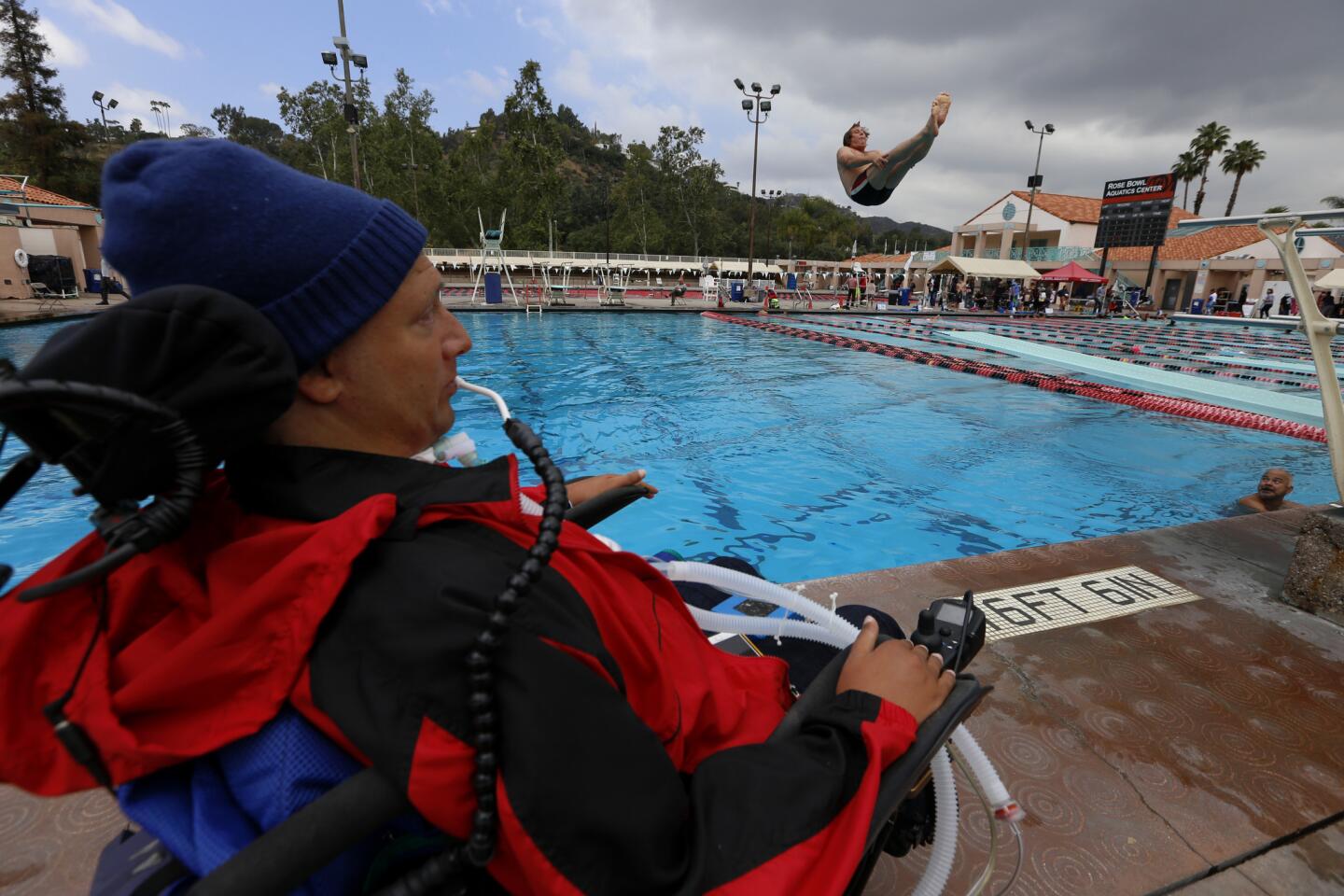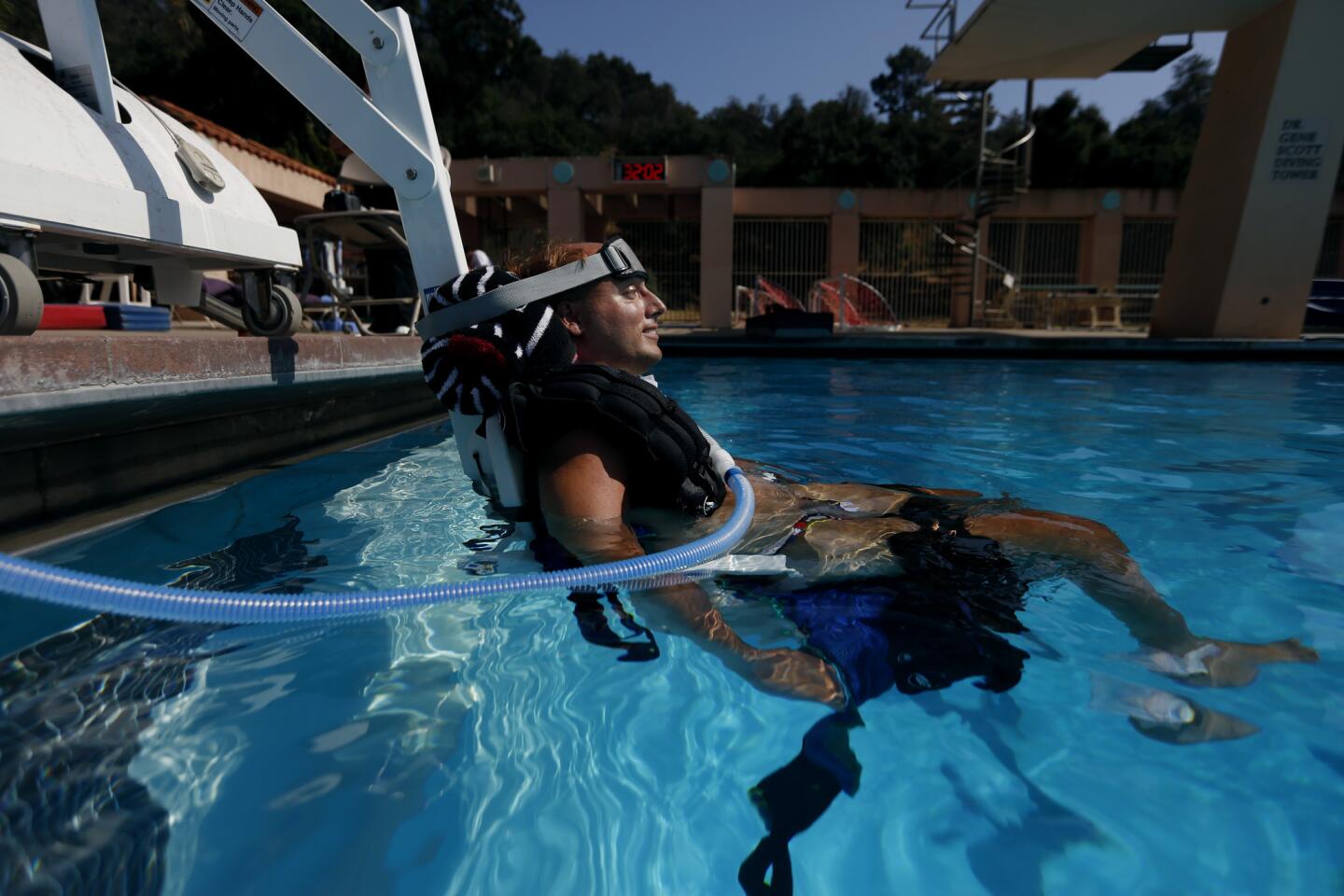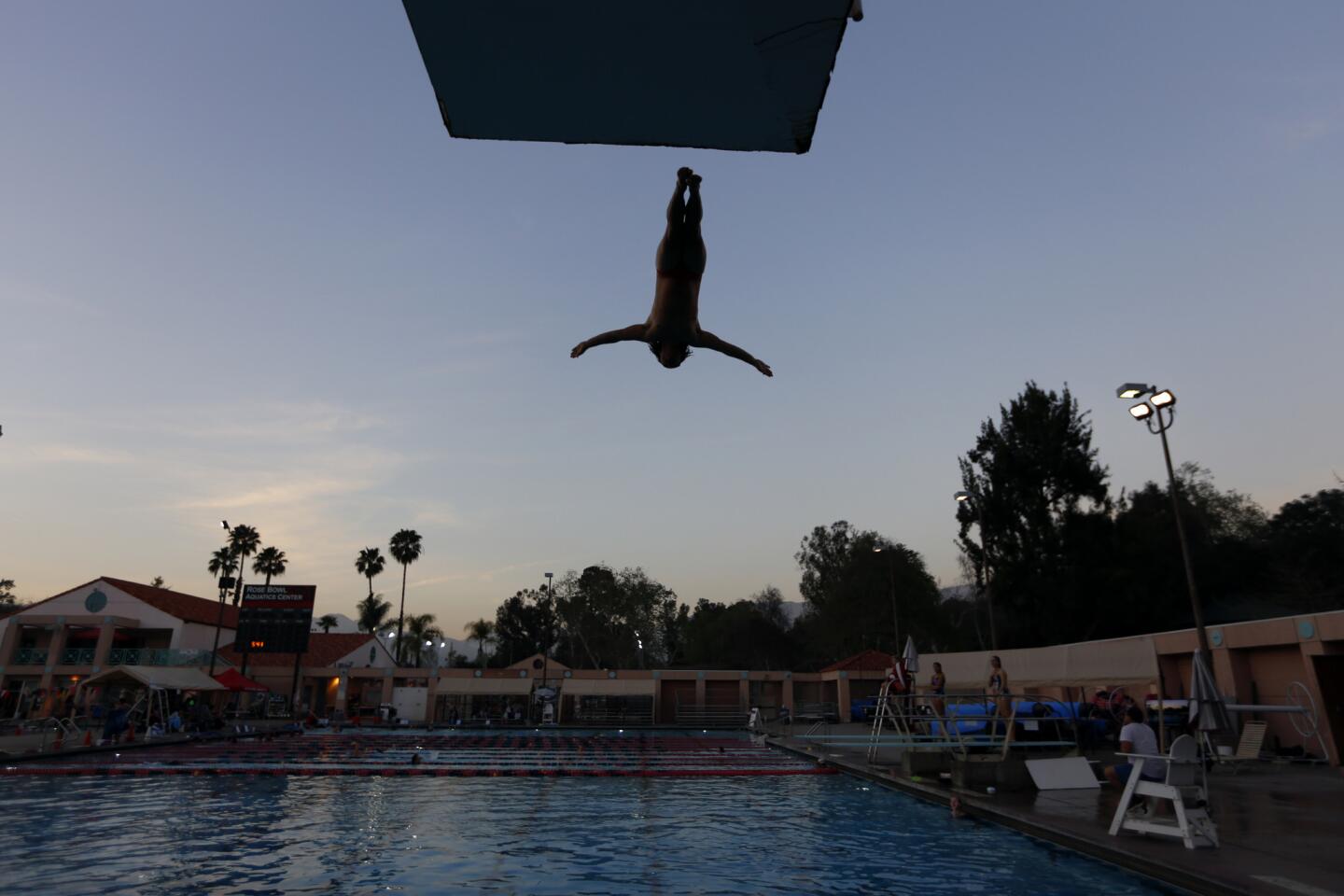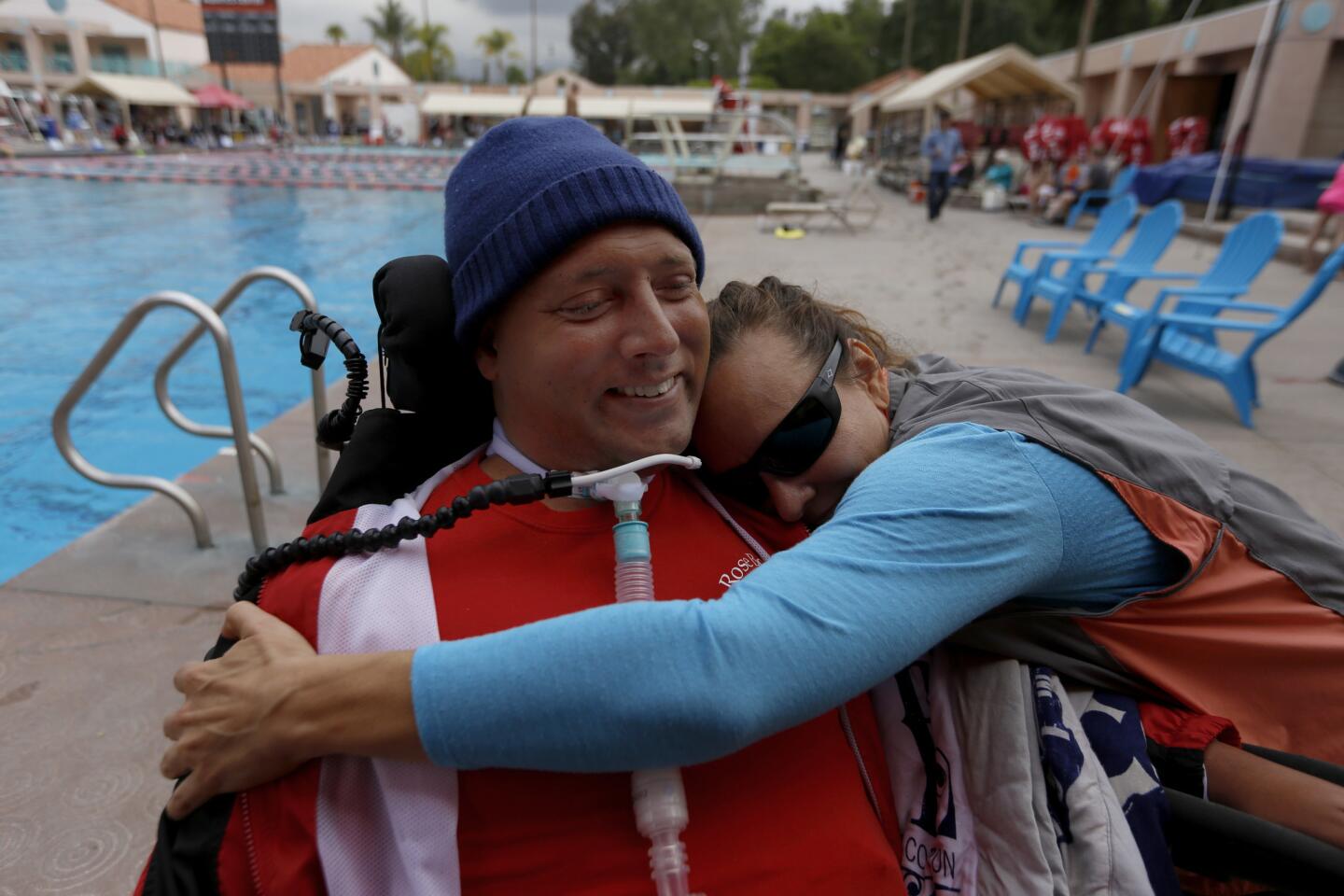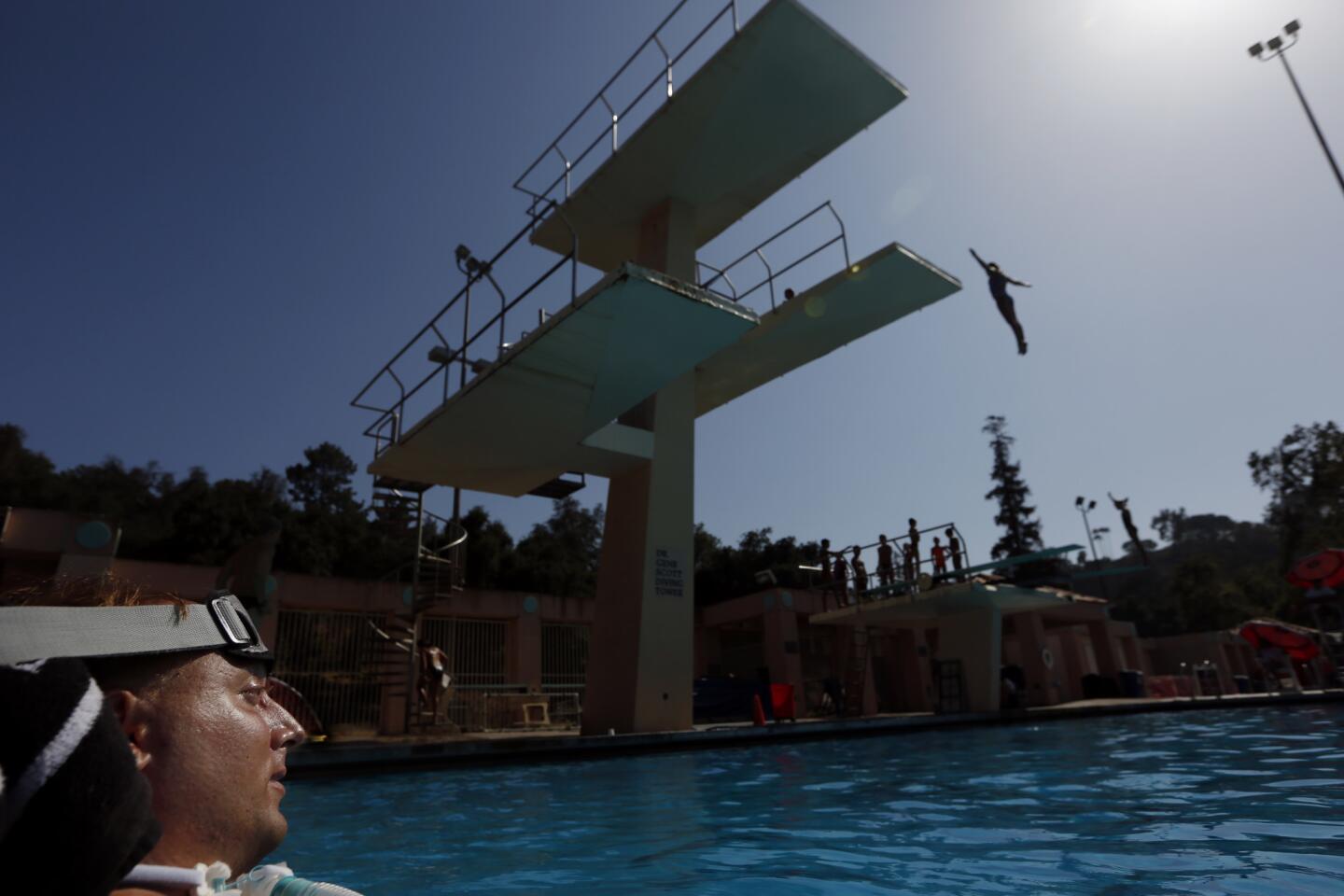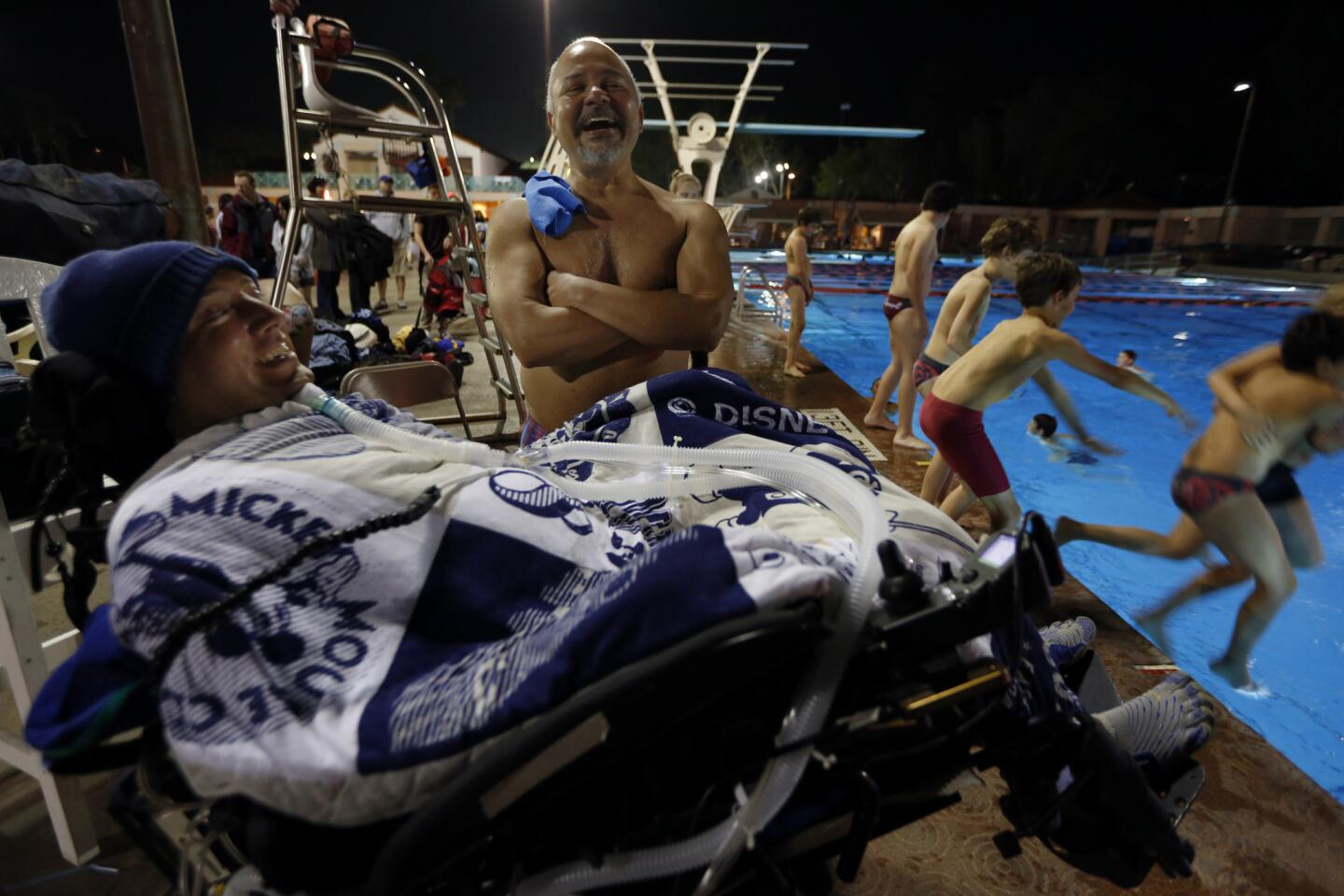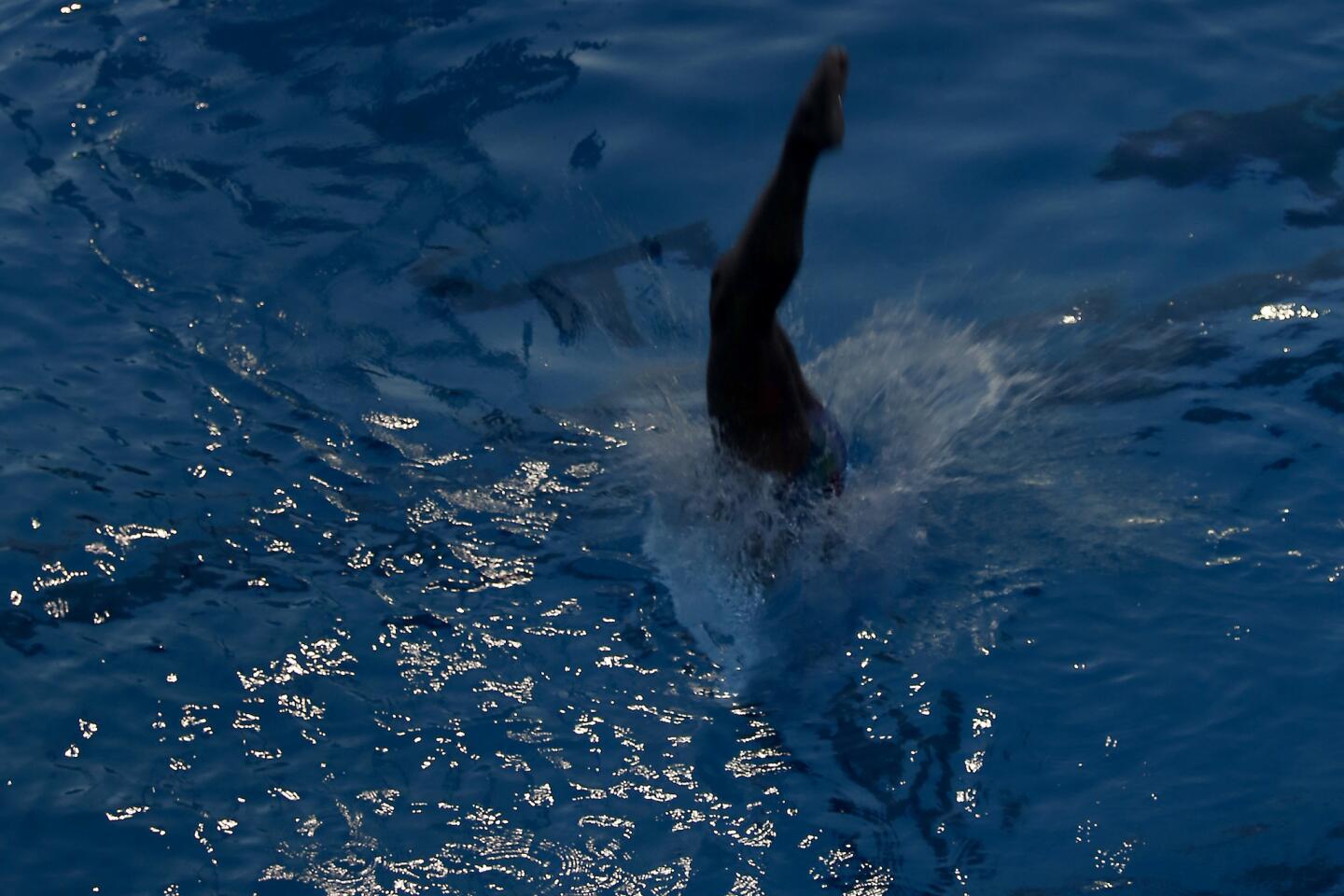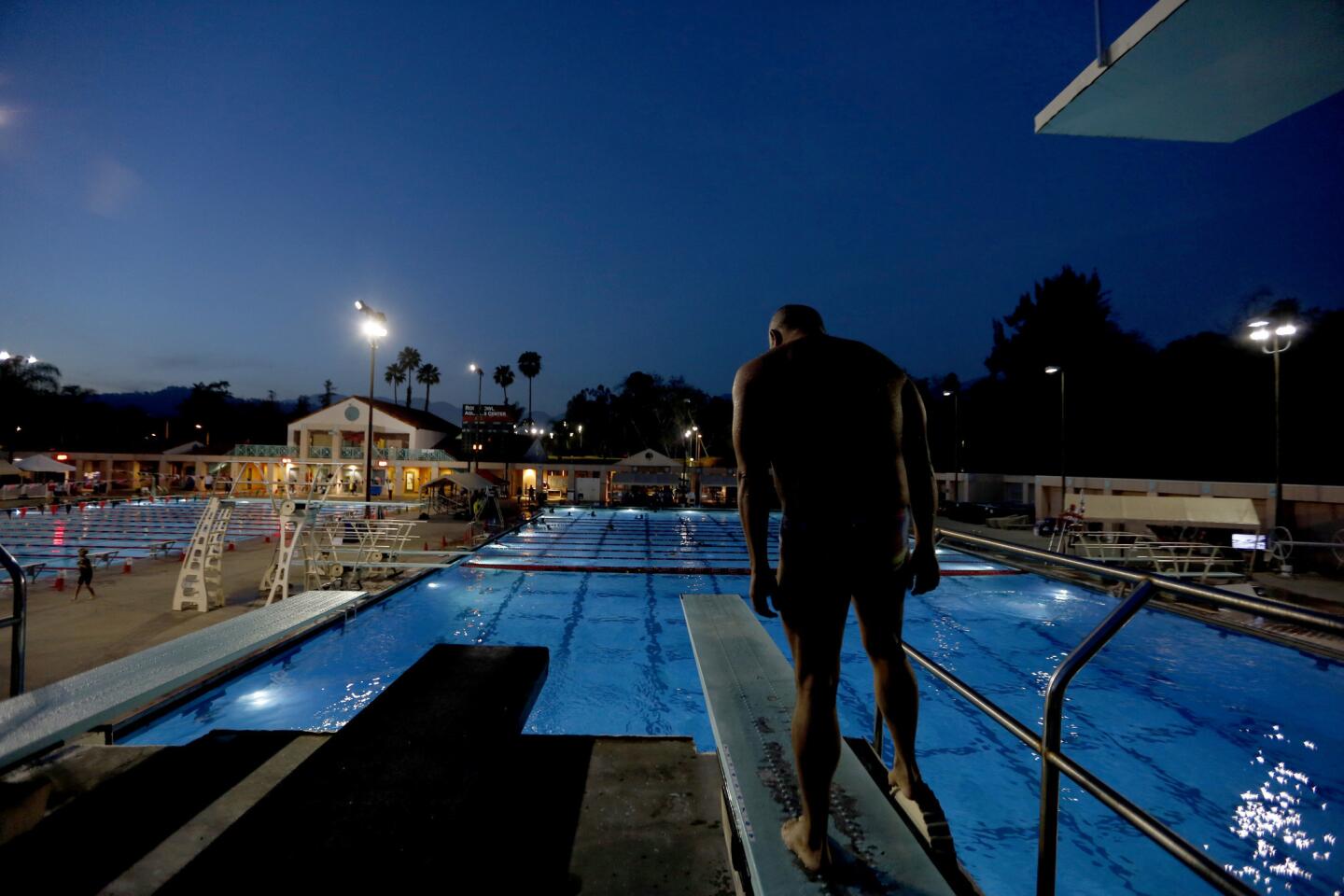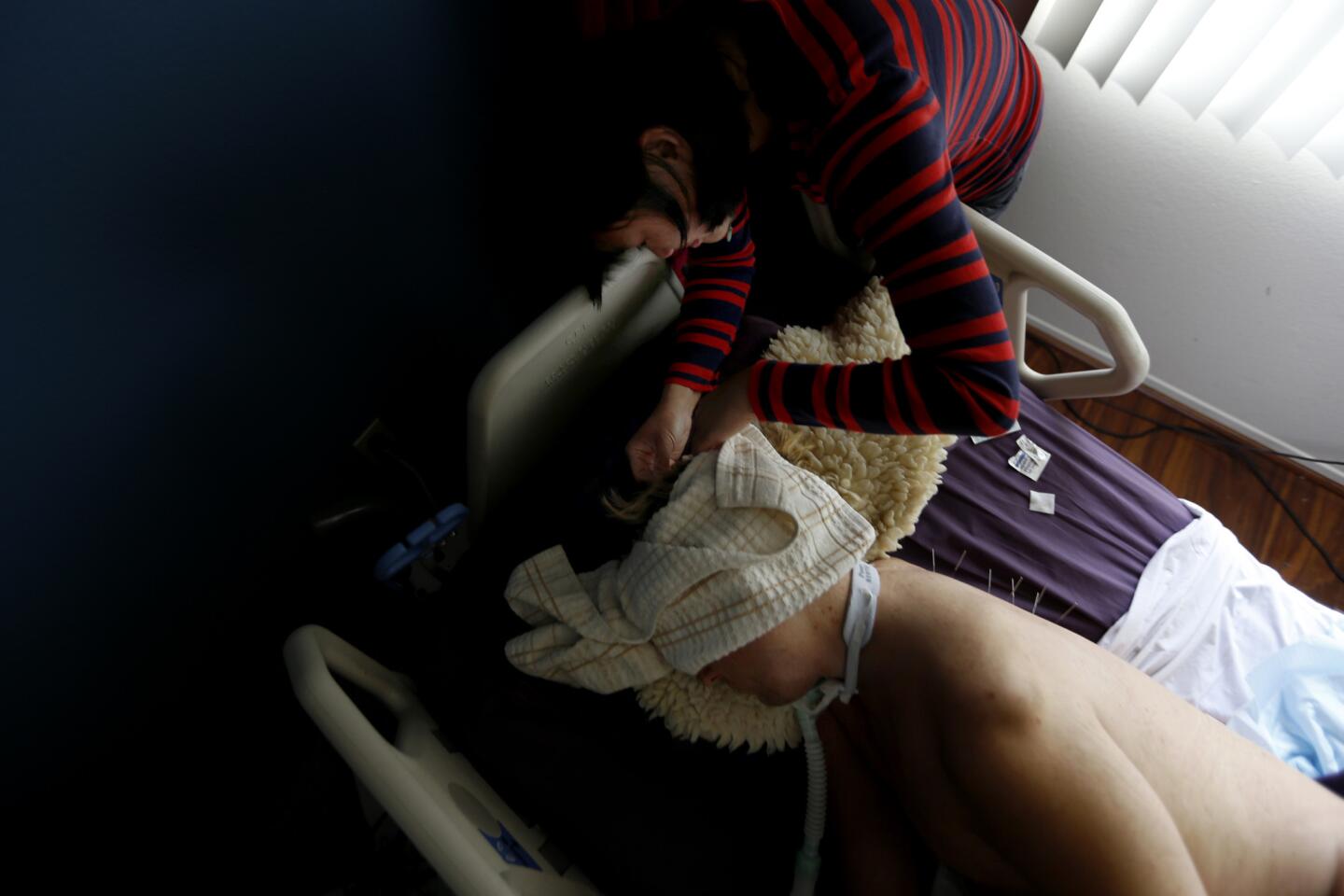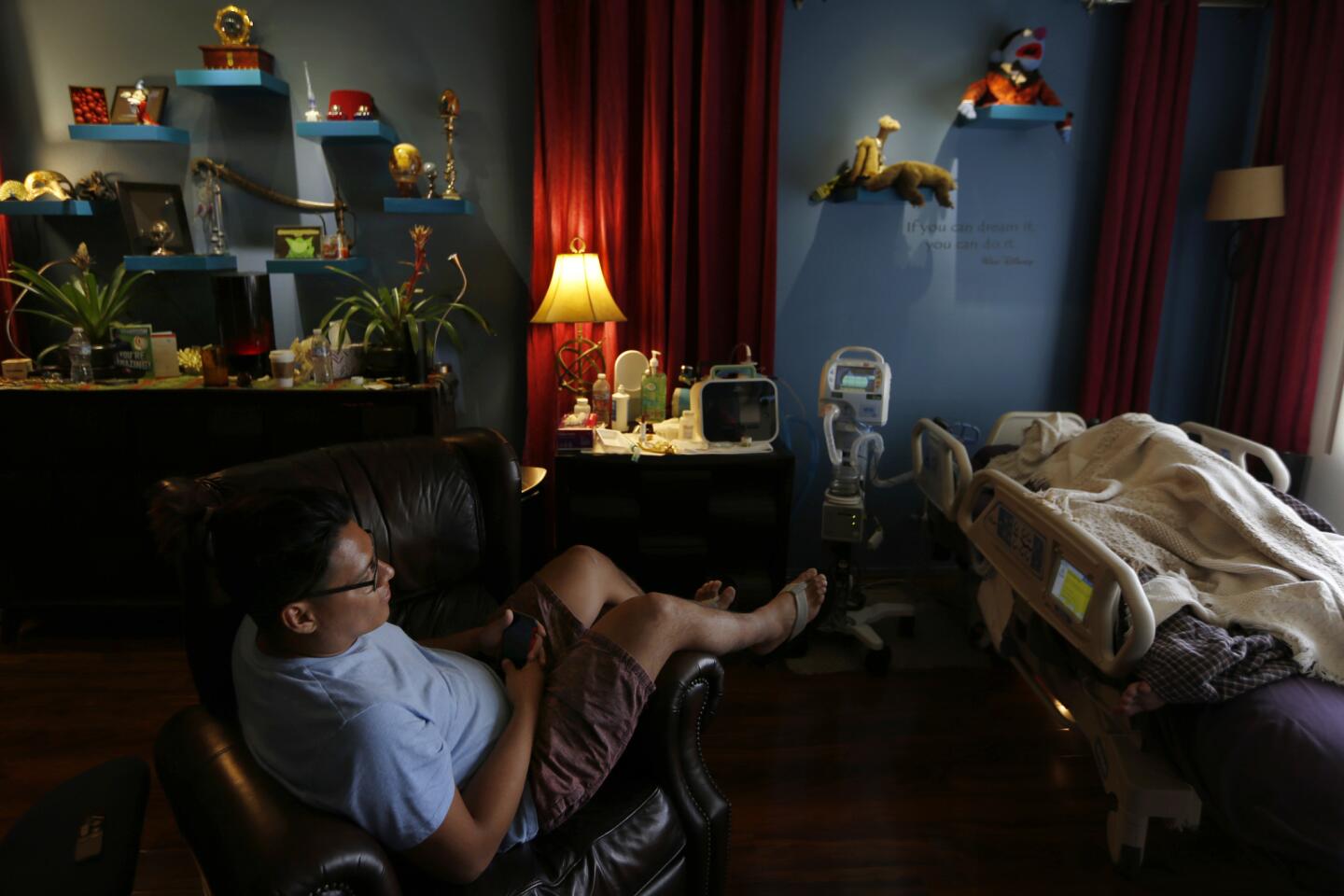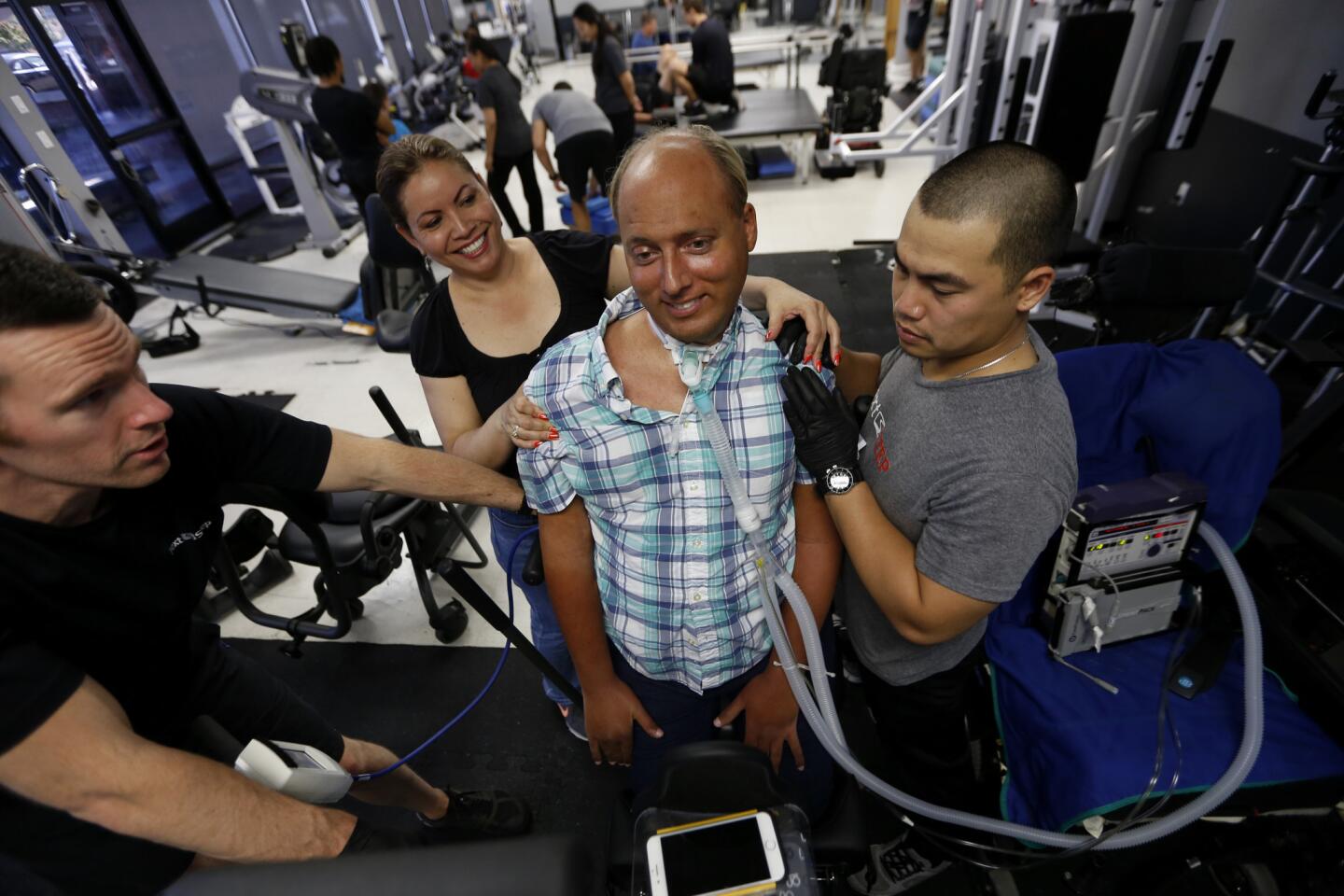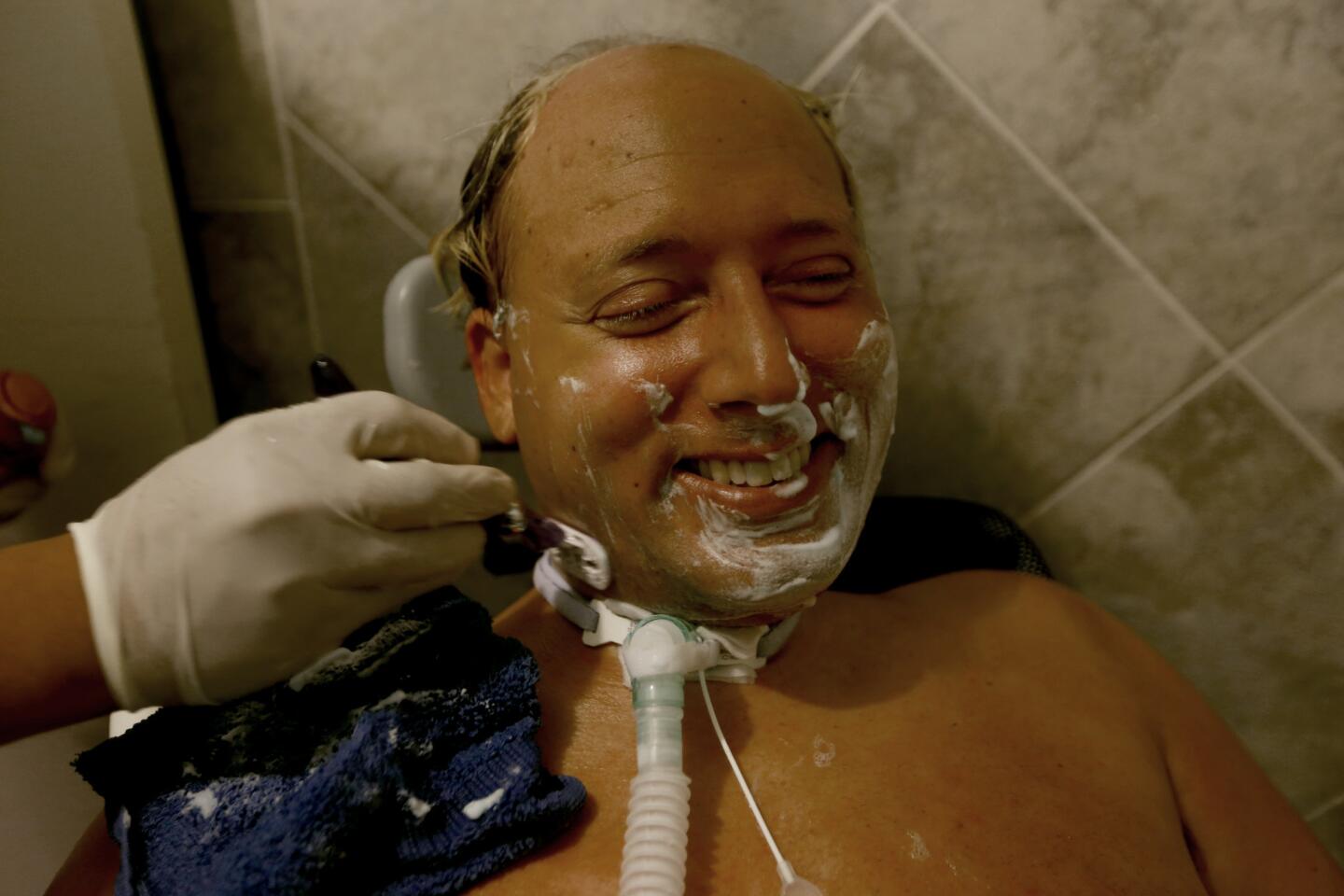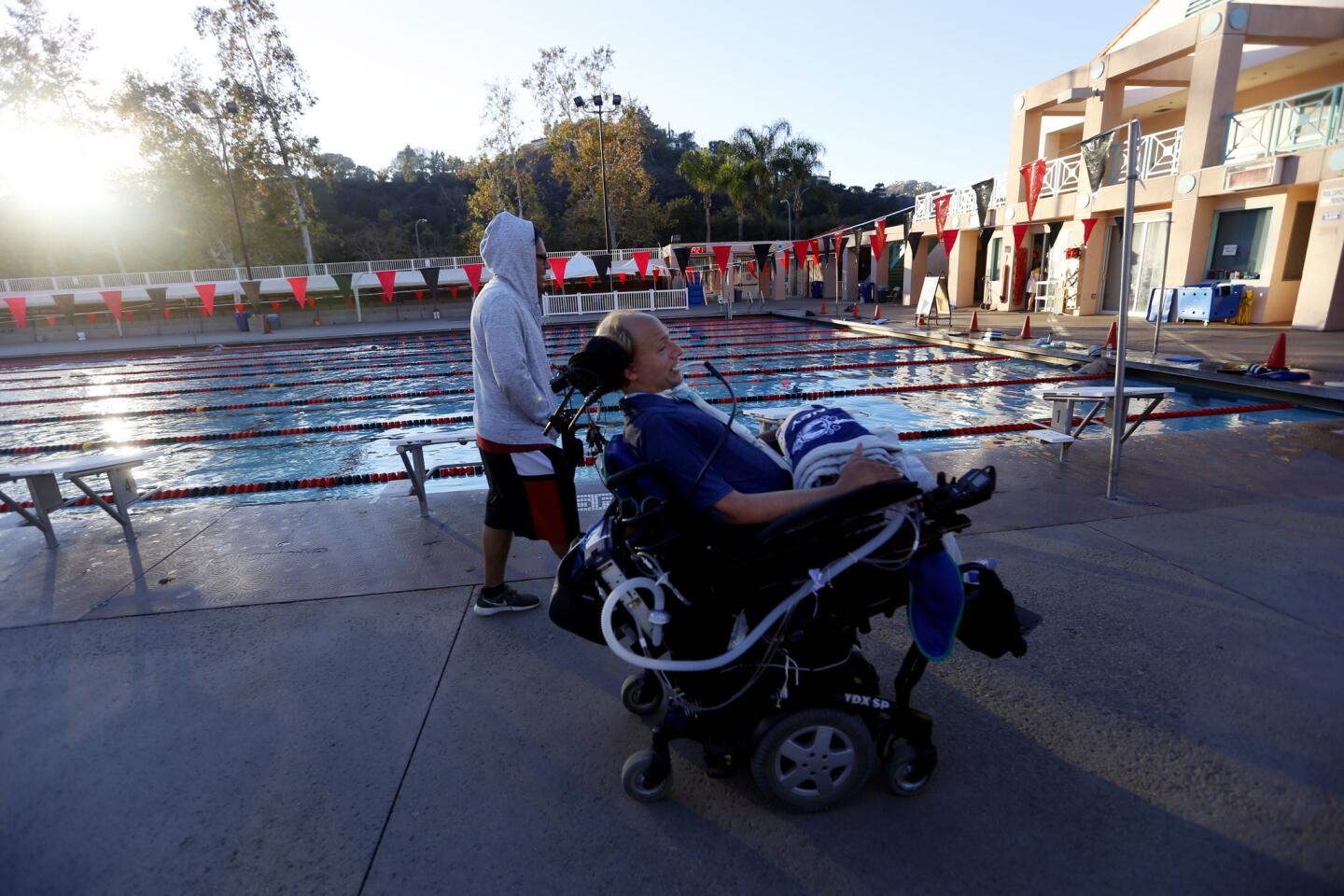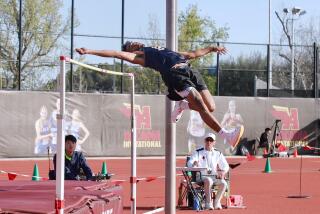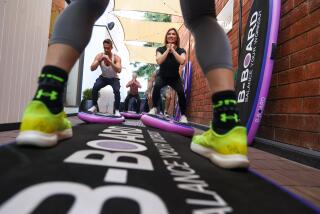He can’t move on his own, but that doesn’t mean he can’t train master divers

After an injury left him paralyzed, Lenny Larsen continues to coach divers.
Dressed in a metallic-blue Speedo and well-oiled against the sun, Lenny Larsen reclines poolside in his power wheelchair. Larsen loves the midday warmth. A slight breeze musses his wispy blond hair.
Two divers, eager for his advice and counsel, wait at the foot of the one-meter springboard. Kevan Roche climbs on top and collects his thoughts before attempting a front 1½.
“Right foot, left foot, knee up high,” Larsen says. “You’ve got the steps, but where do I want your arms to be?”
“Up high,” Roche says.
“Yes!”
Roche steps into his lunge. Airborne, he begins his flip high in the air but falls fast, slapping his back against the still surface of the water. He bobs to the surface, wincing from the pain.
“Oh, that didn’t hurt,” Larsen says.
Gravity is every diver’s nemesis, and Larsen knows its lessons well. Three years ago while practicing a backflip on a trampoline at the Rose Bowl Aquatics Center, he broke his neck. Now a quadriplegic and coach, he believes that the lessons he learned from his mistake are worth sharing.
“Kevan,” he says, “slow down and relax. Don’t make it rocket science. That’s my job.”
Let other coaches gesticulate and model proper form, send signals from sidelines or pace their dugouts; such demonstrations are not available to Larsen. He has only words to make a point, and even they are constrained. Larsen speaks between the inhales – 12 a minute – delivered by a ventilator to his lungs.

Diving is simple, he tells his students; it isn’t a POW exchange. It begins with a jump and ends with the lineup into the water. In between are the variables that need to be navigated. He knows that only a few corrections – seven, 10 at most – will turn a bad dive into a good dive, but he has to find dozens of ways to say it.
“Stop running down the board like a bull.”
“You’re throwing back your head like you’re pulling on the emergency brake.”
“You need to see your feet … I want you to give yourself a pedicure on the way down.”
Larsen has found his style: the apt analogy, a word of encouragement, an unsentimental goad. His divers – more than 20 in a master’s class – speak of him with a Yelp-like affection.
Without irony, they turn to the man in the wheelchair for help.
::
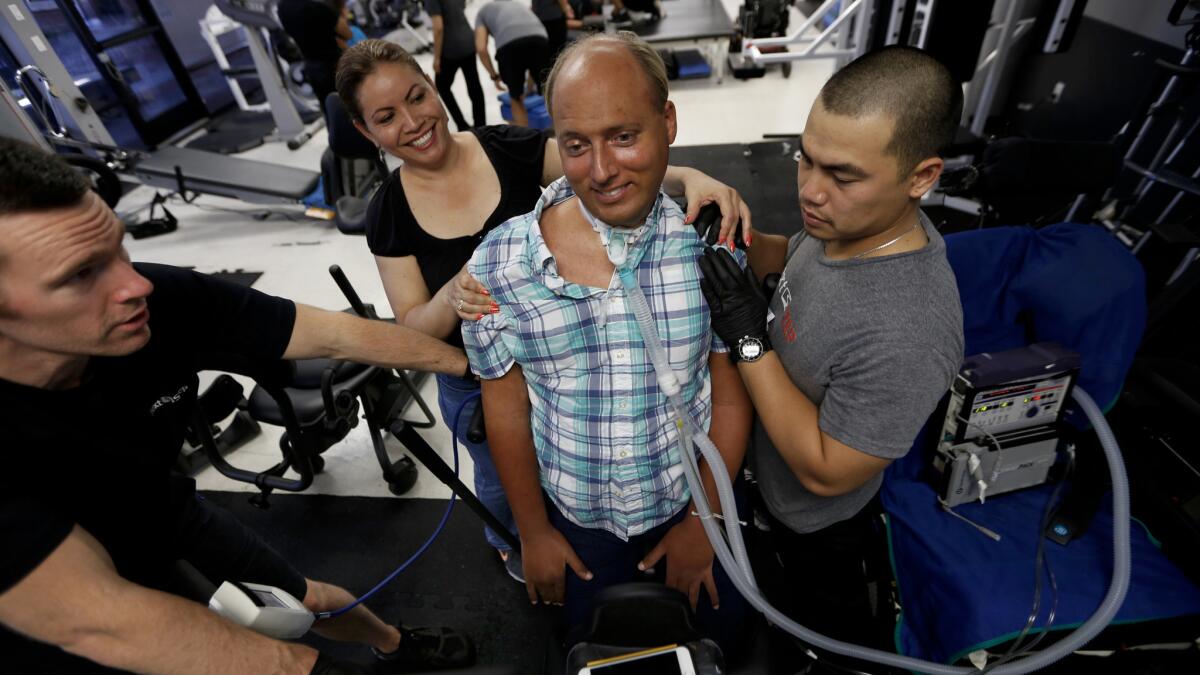
Almost 2,500 years ago, a fresco painter captured the first diver, a man leaping from a stone platform, arms extended, head first. The image, decorating the inside of a tomb in southern Italy, has been interpreted as a metaphor for life: Every moment, even a few seconds in the air, is an opportunity to do something brave, outlandish, perhaps even beautiful.
Larsen, 36, discovered his moment 10 years ago when he leaped off a diving board in Pittsburgh, and there was no turning back. He had come to the sport late, and competitions, like the Olympics, eluded him.
But he started to compete at the master’s level with divers in his age category. At his first international meet in Sweden in 2010, he placed second in a three-meter event.
By then he had moved to Pasadena and was training at the Rose Bowl Aquatics Center, where he started to coach as well. Perfecting his skills as a diver, he helped a range of amateurs perfect theirs. Some went on to become national champions on the master’s circuit.
The Arroyo Seco, seen from the 10-meter platform, 33 feet above the water, was his home, and the air was his stage.
“Launch, flip, twist,” he says. “It is a dance, all in 2.2 seconds at 35 miles per hour.”
Divers about to execute a new twist or flip often pause on the board or platform to find their focus. Too easily, their minds wander to all that might go wrong with a new maneuver – from the flops and the splats to the dislocated shoulders, the retinal detachment, the broken arms, the concussion, lacerations and scalpings.
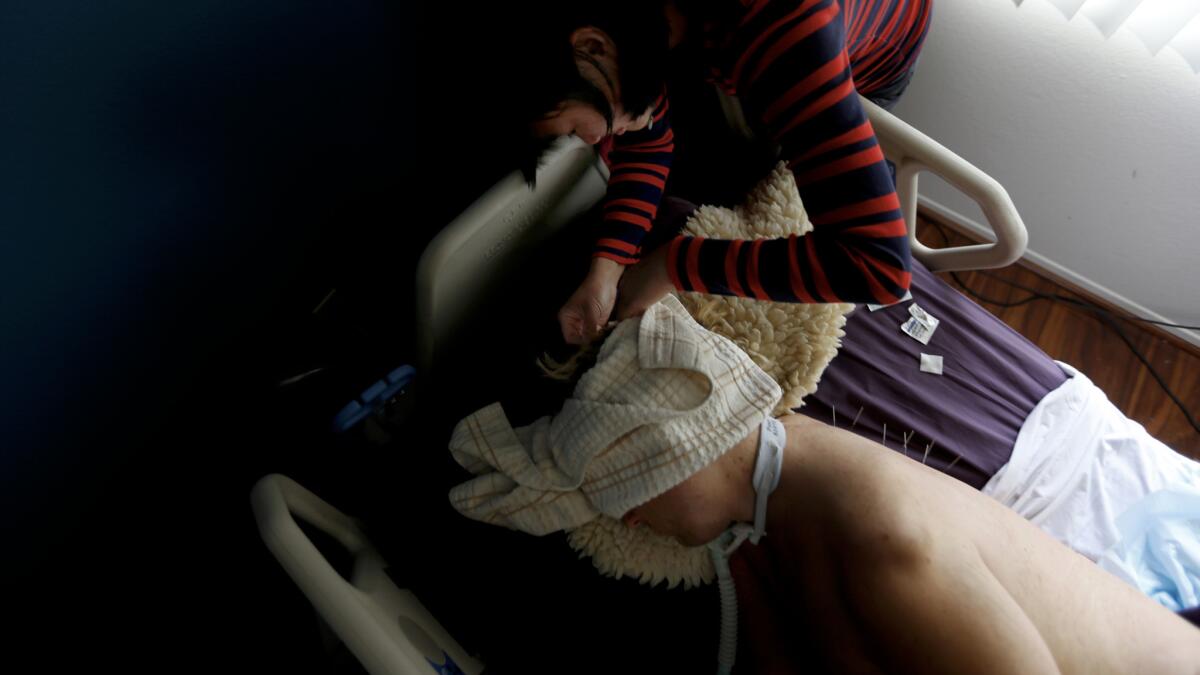
For some, the delay is less than a minute before they leap into space. For others, it drags on until they walk away.
“Don’t wait. Show confidence,” Larsen tells them. “You wouldn’t be here if you couldn’t do it.”
The key is to have faith in your strength and training — and to never count on your brain. Count on your brain, he says, and bad things will happen. This is a visual sport; your brain will lie to you every time.
Larsen’s betrayal took place on a summer morning in 2013. He had arrived at the aquatics center for practice before driving to Woodland Hills, where he worked for a company that designed theme parks. In a month, he planned to dive at a national competition in Ann Arbor, Mich.
The pool was crowded with swimmers, and he and the other divers turned to the trampolines to start their morning routine.
“I was doing a ridiculously simple backflip,” he recalls.
Halfway through, he knew he had miscalculated. His brain told him that he had carried his feet over far enough.
But he hadn’t.
After two surgeries within 48 hours, he woke up unable to move or breathe on his own.
Fellow divers hung in his room a banner, words of encouragement. A boyfriend, whom he’d been dating for a few months, stood by his side. Friends came and went. His parents were there every day.
During two months in the ICU, he thought he was dying, an experience he says was made horrible and beautiful by the nightmares and medications he was on.
Eventually he went to Chicago for rehabilitation, and after nearly a year and a half, he returned to Pasadena and the aquatics center. When he rolled out onto the pool deck, he felt that he had come home.
For once, nothing else mattered.
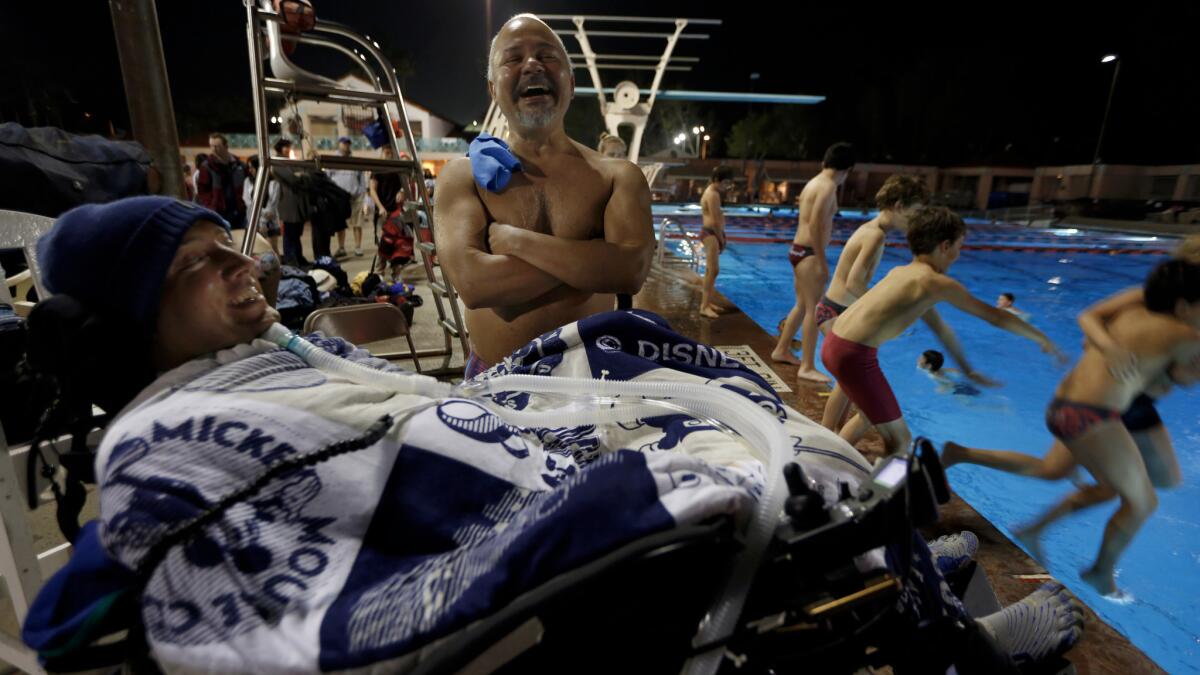
::
When Larsen dreams, he dreams of flying.
He lunges on his right leg, arms stretched behind him. In one sweep, he reaches overhead, lifts his left leg and springs up on the board before coming down into a near squat.
Launched, he feels the air rush by. He bends at the hips and grabs behind his knees. The momentum sets him spinning, once, twice, before straightening, head first, arms extended, one hand grabbing the top of the other to punch a hole in the surface of the water.
All goes silent but for the sound of the silver bubbles rushing to the surface.
Today just holding his head up would be enough.
He is in Lawndale, where he comes three times a week for physical therapy. His trainers have him strapped into a chair-like contraption that will elevate him to a nearly upright posture. Only his head is free, and they are careful to hold it upright for him.
“Don’t tilt my head so far backward, please,” he asks.
They have placed a series of electrodes on his back just below a long pleated scar on his neck. The pads will stimulate local muscles in a series of 15-second bursts.
“Ready on three,” says David Merin, who stands at a small transformer. “One, two, three.”
In an instant, Larsen’s slightly slouched posture straightens. Pulses of electricity allow him to hold his head up without help. The work is arduous, each muscle rhythmically tensing and relaxing like an open and closed fist. Larsen winces as other muscles go into spasms from the treatment.
Is that too much stimulation? Merin asks.
“I’ll live,” Larsen says.
Returning to normal is his goal. During a trip to Thailand, doctors implanted electrodes and stem cells in his back to keep his muscles from atrophying.
This fall at UCLA, a surgeon will replace the damaged nerve to his diaphragm with an intact one, so that one day Larsen might be able to breathe on his own.
He tracks neuroscientists in their search for the right enzymes and peptide that might one day break through the scar tissue that develops around spinal cord injuries and impedes the nerves trying to reconnect.
He keeps depression at bay by staying busy and treats panic attacks with an occasional Xanax. A phone call to his grandparents in Chicago also helps. He says that he is a nondenominational Christian and that God has a plan for him.
“I believe there is a reason that I’m going through this,” he says. “I don’t believe for a second that I’ll be like this for the rest of my life.”
::
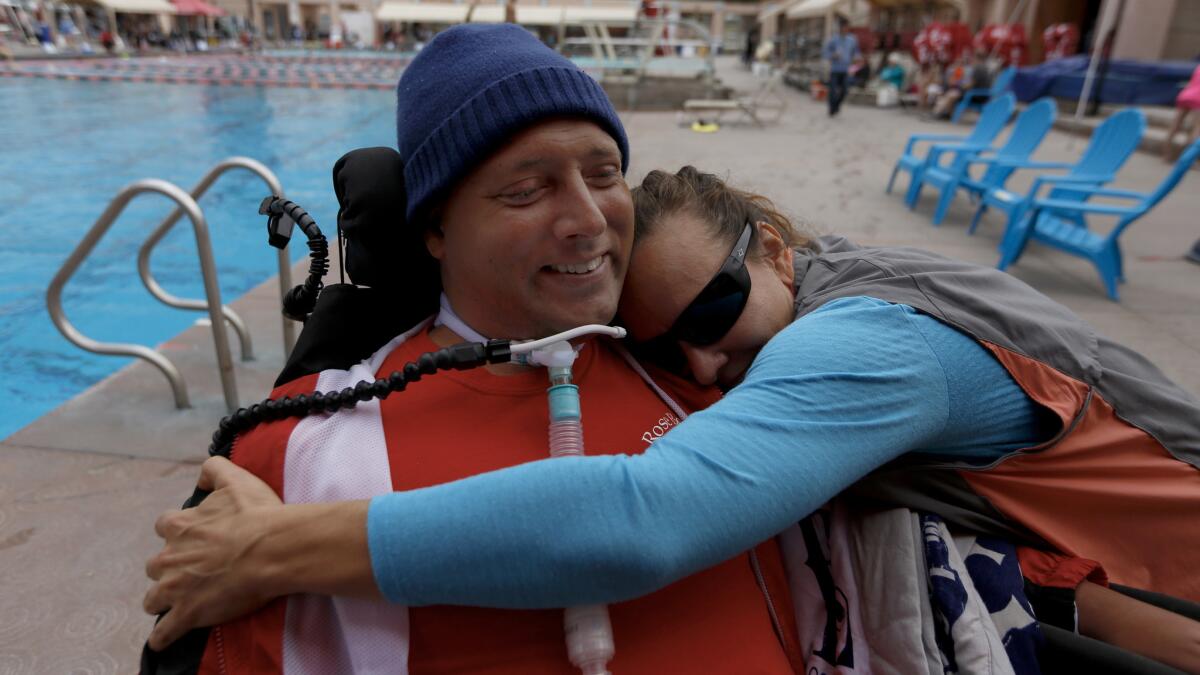
On a Monday evening at the pool, Larsen watches his divers practice on the three-meter springboard. He is bundled up against a chill breeze that carries with it the tang of chlorine and ripples the brightly lit water.
The four men, naked but for their Speedos, stand and stretch above him. Wiping their limbs with a chamois, they could have stepped out of a painting by Thomas Eakins. Soon the air becomes a canvas for flight as they soar, Icarus-like, through the air.
Luis Bahamon stands on the board, ready for a front pike, a simple but elegant dive that traces a beautiful arc from the board to the water. Bahamon’s execution is nearly perfect.
“What was wrong with that?” Larsen says after Bahamon swims to the surface. “I like it. Now do it again.”
The next diver, Mark Hearn, stands on the edge of the seven-meter platform. He is celebrating his 60th birthday and feels ambitious.
He wants to do a forward 2½, and after a moment’s pause, he makes his leap, tucking his chest to his legs, spinning in flight, but he’s not fast enough. He splats loudly on the water, a stinging flop on his back.
Schoolchildren about to begin their swimming practice start chanting: “Do it again. Do it again.”
Hearn waves as he swims to the edge of the pool.
Larsen laughs.
“There is nothing,” he says, “I wouldn’t do to be back up there again.”
Twitter: @tcurwen
More to Read
Start your day right
Sign up for Essential California for news, features and recommendations from the L.A. Times and beyond in your inbox six days a week.
You may occasionally receive promotional content from the Los Angeles Times.
